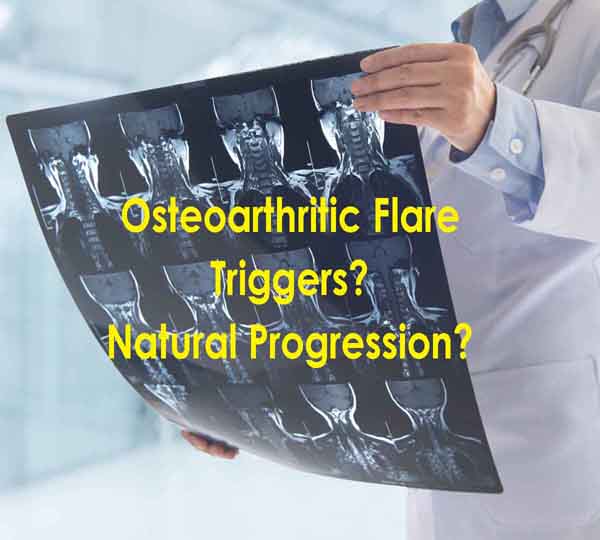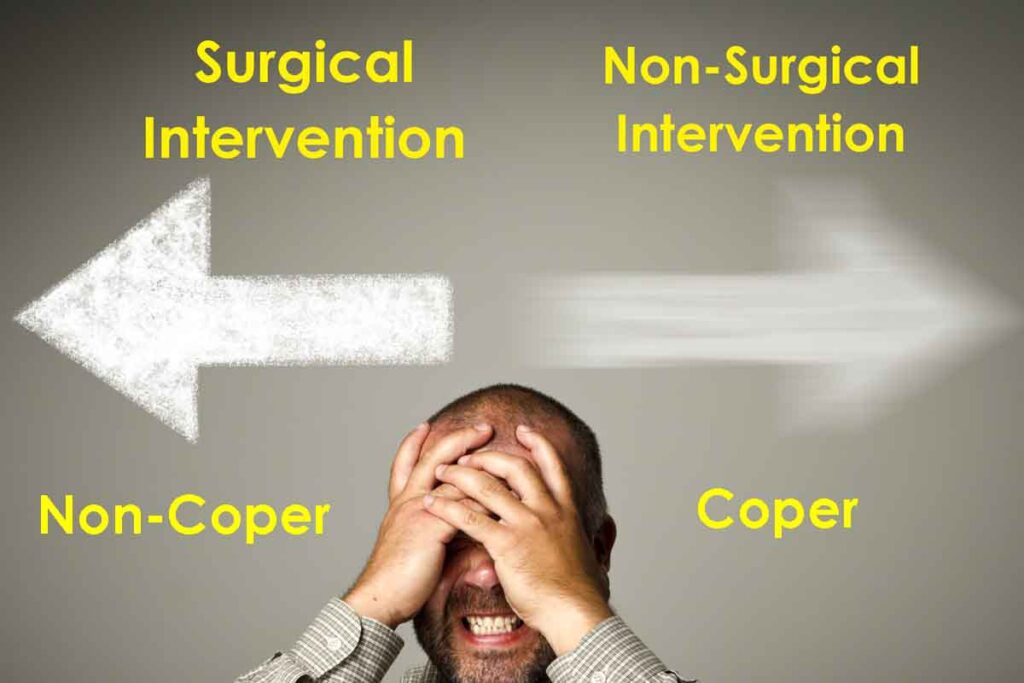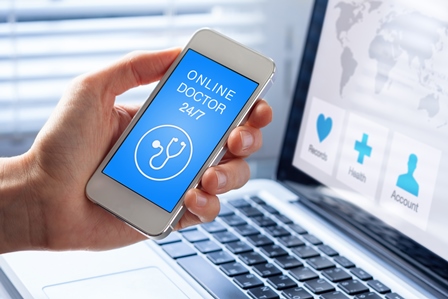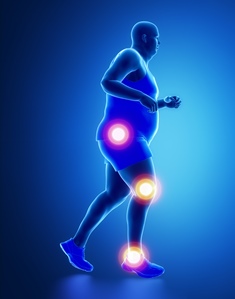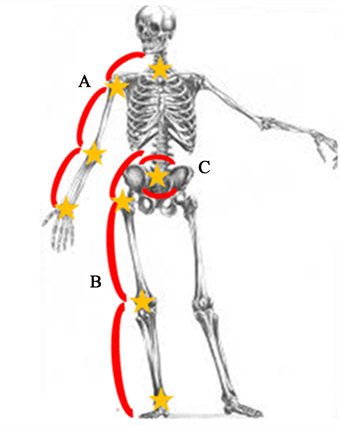Posts Tagged ‘Back Pain’
Adjusting the exercise load to manage musculoskeletal pain syndrome
Adjusting the amount of exercise load involves seeking a balance between increasing or decreasing the load. Athletes and healthy individuals the bias is towards increasing the load to improve capacity and performance. For musculoskeletal injuries, post-orthopedic surgery, or musculoskeletal pain syndromes, the bias is towards decreasing the load to facilitate healing and recovery. Tactics to…
Read MoreHow does the natural progression of osteoarthritis influence the management of osteoarthritic flares?
Case Example: Over the last year, on several occasions, a patient has sought assistance for recurring flaring neck pain. Radiographs show moderate osteoarthritic (OA) changes in the cervical spine. A history of mild to moderate scoliosis of the spine has existed since childhood. Over the years, the neck pain has alternated from long periods of…
Read MoreOrthopedic surgery is not always necessary – coper vs non-coper
A diagnostic image such as an MRI can show significant structural damage such as a complete tear of the anterior cruciate ligament (ACL), a complete tear of the rotator cuff of the shoulder, a herniated spinal disc, or other musculoskeletal tissue damage. In 1983 Frank Noyes and colleagues in a seminal study of patients without…
Read MorePath of least resistance is not always the best option – sometimes it is better to have some stiffness
There are three possible relationships between movement and musculoskeletal pain syndromes. There is either too much movement, not enough movement, or an optimal amount of movement. When a muscle tendon unit and/or joint is flexible, hypermobile, or unstable there is too much movement. When a muscle tendon unit and/or joint is stiff or hypomobile there…
Read MoreHalf Seat Lateral Wedge for Lateral Pelvic Tilt Sitting
Shoe lifts or lifts in the shoe are a common treatment for leg length discrepancy. Why are lifts not used for lateral pelvic tilt when sitting? In a previous blog article, I described lateral pelvic tilt and anatomical versus functional lateral pelvic tilt. Lateral pelvic tilt can result from individual structural variation, and defective chair or…
Read MoreChoices of interventions for musculoskeletal pain syndromes: decrease pain, improve impairment, resolve dysfunction
There are multiple and varied interventions that can tackle the contributing factors of pain, impairment, and dysfunction that occurs with musculoskeletal pain syndromes. Pain impairs an individual’s ability to function Impairment is loss of use or derangement of any body part, organ system, or organ function. Dysfunction is an alteration of an individual’s capacity to…
Read MoreHome based Physical Therapy Services – unique benefits of observing real-world issues
Traditionally physical therapy services provided at a person’s home occurs when the individual was “homebound.” According to Medicare regulations homebound is the patient requires assistance to leave home and that when they do, it requires a considerable, tasking effort. This is no longer the case. You do not need to be considered home-bound to receive…
Read MorePhysical Therapy Telehealth: It works well for some, not for others
The COVID 19 pandemic crisis has many challenges for the standard everyday health care and medicine. The pandemic resulted in a sudden increase of telehealth services. There are reports there has been an 18% increase in the number of healthcare providers providing telehealth services in response because of the pandemic. Healthcare providers and patients are…
Read MoreHow to exercise to lose weight when exercise is painful
High body mass index (BMI) is significant factor in low back pain, osteoarthritis; hip osteoarthritis; knee osteoarthritis, plantar heel pain. Weight loss intervention for pain reduction Decreasing body weight is an effective intervention to decrease musculoskeletal pain. Research by Stephen Messier at Wake Forest U, looking at individuals with painful osteoarthritis of the knee who…
Read More“Deme Bones” – Regional interdependence
The common reframe from the old spiritual song “dem bones” is the “toe bone is connected to foot bone”. In the medical community this concept of mechanical connectiveness is referred to as “regional interdependence”. Regional interdependence is seemingly unrelated impairments in remote anatomical regions of the body may contribute to and be associated with a…
Read More

